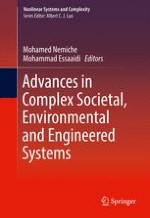2017 | OriginalPaper | Buchkapitel
Energy-Efficient Buildings as Complex Socio-technical Systems: Approaches and Challenges
verfasst von : F. Lachhab, M. Bakhouya, R. Ouladsine, M. Essaaidi
Erschienen in: Advances in Complex Societal, Environmental and Engineered Systems
Aktivieren Sie unsere intelligente Suche, um passende Fachinhalte oder Patente zu finden.
Wählen Sie Textabschnitte aus um mit Künstlicher Intelligenz passenden Patente zu finden. powered by
Markieren Sie Textabschnitte, um KI-gestützt weitere passende Inhalte zu finden. powered by
